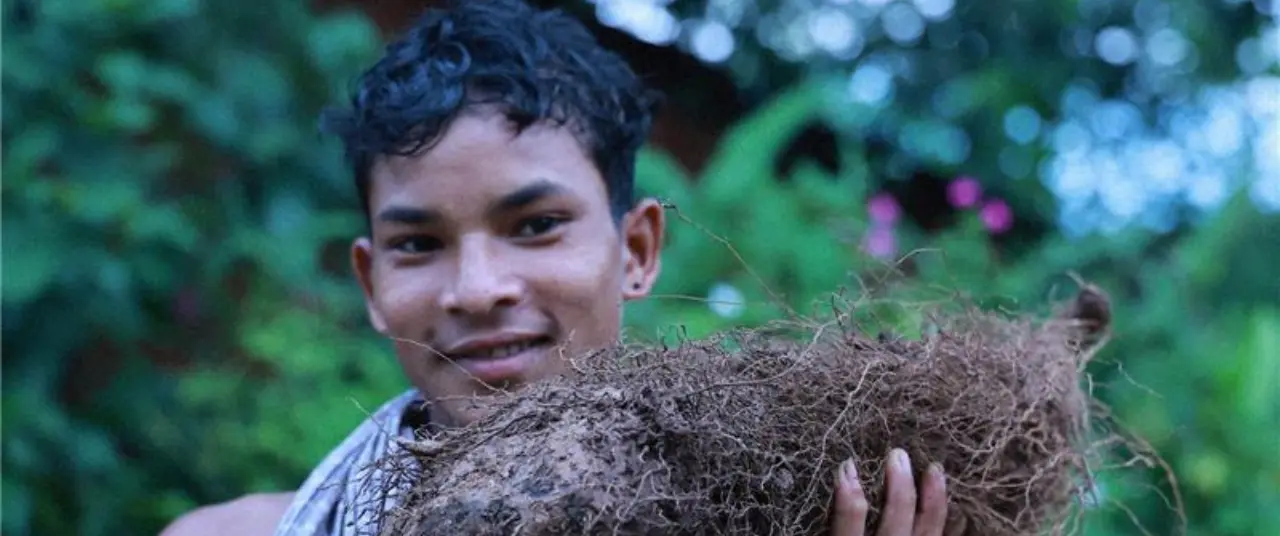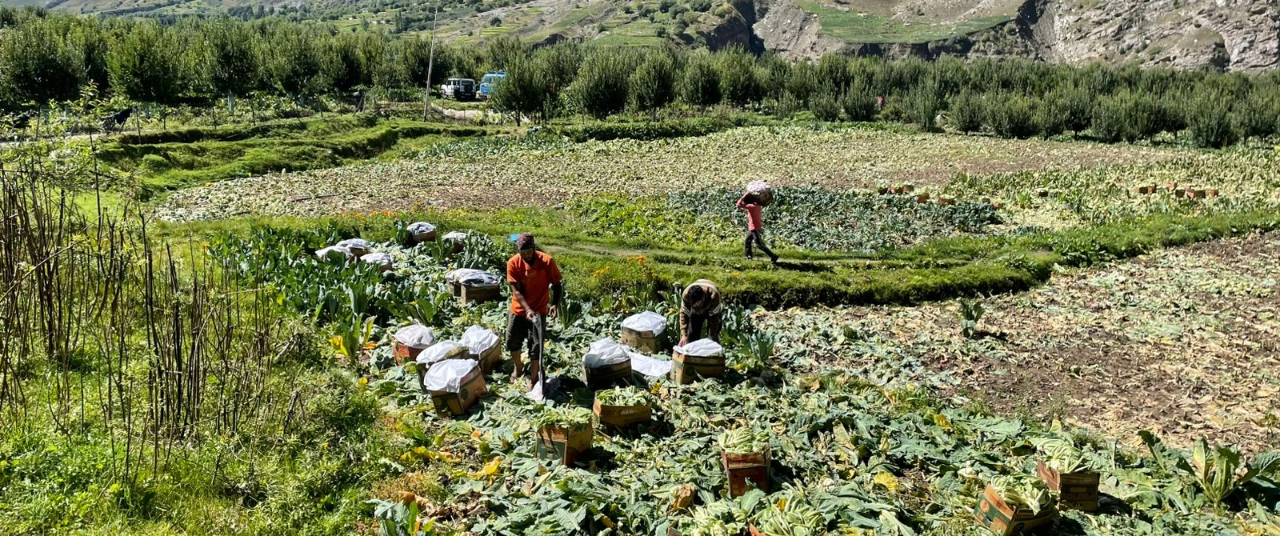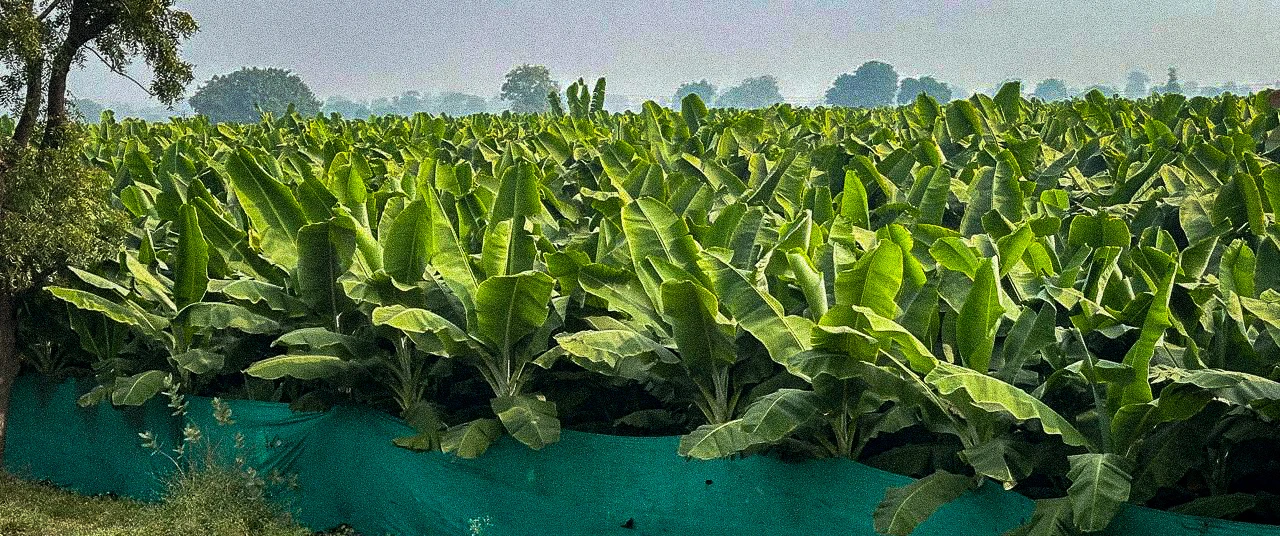Benefits that come with GI tags are not equally distributed across stakeholders like farmers and labourers






The Plate and the Planet is a monthly column by Dr. Madhura Rao, a food systems researcher and science communicator, exploring the connection between the food on our plates and the future of our planet.
What makes Darjeeling tea truly Darjeeling? How much of its fiery strength does the Guntur Sannam chilli owe to the growers who know just when to pluck and cure it? And without the Konkan’s laterite soil and salt-laden sea breeze, would the Alphonso still be hailed as the king of mangoes?
Geographical Indication tags (GI tags) seek to give a legal form to these entanglements, offering a framework to protect prized traditional products as well as the knowledge and geographic conditions that make them possible. In this column, I examine how GI tags for food and agricultural products operate in practice, exploring both–the promises they hold and the limitations producers face in translating those promises into meaningful gains.
Whose place, whose gain?
The idea of a GI tag gestures to the possibility that place-specific products can offer both distinctiveness in the marketplace—and recognition and prosperity to those who sustain them. Yet how this potential unfolds in practice is shaped by existing power structures and inequalities within each production system.
Darjeeling tea, the country’s first GI tagged product, offers a compelling case. Grown on the slopes of the eastern Himalayas, the tea owes its delicate flavour not only to elevation and climate, but also to the labour of hill-dwelling communities who have cultivated and plucked its leaves for generations. The Tea Board of India, in fact, sought protection for the unique Darjeeling Tea back in the 1980s–long before the Geographical Indications of Goods Act was passed in 1999–by registering an official ‘Darjeeling Tea’ logo in other countries as a marker of authenticity; this protected, specifically, the exports of the tea from counterfeits.
Finally, the Board earned a GI tag for Darjeeling Tea in 2004, cementing a legal and structured relationship between the tea and its planters. GI protection reinforces the connection between terrain and taste, turning the plantation landscape into a site of heritage. At the same time, the legacy of colonial plantation economies remains evident in the structure of production, where estate ownership and export channels continue to shape who benefits most. While the GI helps guard the name ‘Darjeeling’ from misuse, its economic impact on workers—many of whom are landless and excluded from decision-making—remains limited.
In the case of Goan Feni, a traditional spirit distilled from cashew apples, the GI tag similarly aims to preserve a culturally significant product, anchored in local knowledge and the distinct ecology of the region. Feni’s production depends on skilled artisanal labour: from selecting and crushing ripe fruit to managing natural fermentation and operating small-batch stills made of clay or copper. However, the economic value generated by the GI tag does not circulate evenly.

Those involved in bottling, branding, and marketing capture a disproportionate share of profits, while cashew farm labourers and small-scale distillers receive far less. This is a newer, inverse development: historically, those involved in manufacturing and producing–not branding–held sway, because it is their skill and precision that impacts the quality of the feni. This disparity reflects broader patterns of access to education, capital, and regulatory literacy. Here, the GI tag solidifies the identity of Feni as uniquely Goan, but it does not, on its own, ensure equitable distribution of its benefits. Nor does it guarantee product integrity or visibility. Many major producers avoid using the GI label altogether, citing regulatory hurdles and the lack of standardisation or monitoring.
Part of the problem lies in how GI tags are implemented in the country: they are often employed as legal instruments that privilege place as the primary source of value.
The land becomes the defining element of reputation, while the people whose labour, techniques, and histories give that land meaning often remain secondary. Even when human practices are acknowledged, they are absorbed into the language of terroir—romanticised but rarely politicised.
Also read: Can India's traditional knowledge future-proof its food system?
Biodiversity conservation
When designed with the purpose of biodiversity conservation, GI frameworks can support the continued cultivation of indigenous landraces, many of which are well adapted to local agro-climatic conditions and require fewer external inputs. In contrast, when GI specifications narrowly favour a single dominant variety or prioritise export-oriented branding, they can inadvertently narrow genetic diversity.
As of 2024, 32 varieties of indigenous vegetable crops have been awarded GI tags in India. A notable example is the Udupi Mattu Gulla brinjal, cultivated in the coastal village of Mattu in Karnataka. This pale green, thin-skinned brinjal variety with immense cultural relevance to the local community owes its distinctive taste and appearance to the region’s clay loam soils, high humidity, and traditional cultivation practices passed down through generations. Concerned about the potential impact of genetically modified Bt brinjal on their local variety, farmers—supported by the Karnataka Department of Horticulture—mobilised to secure GI protection, which they obtained in 2011. The GI tag has helped preserve the seed and traditional cultivation methods and has prevented imitation by brinjal varieties grown elsewhere under the same name.
While GI tags alone cannot safeguard biodiversity, they offer a promising entry point—especially when aligned with policies and market systems that reward ecological stewardship.
Also read: The promises and perils of Indian aquaculture
The geopolitics of GI tags
Next to being tools for protecting cultural heritage and biodiversity, GI tags are also instruments of geopolitical positioning. A long-standing divide exists between the European Union and the US on how GIs should be regulated. The EU promotes a sui generis model that offers strong, territory-based protection rooted in cultural specificity. The US, in contrast, treats GIs as part of its broader trademark system, allowing terms like ‘Parmesan’ or ‘Feta’ to be used generically for cheese. While often framed as a legal disagreement, this tension reflects broader questions of economic influence and cultural dominance in global markets. For many countries in the Global South, aligning with either model is rarely a neutral choice; it often occurs through trade negotiations and donor-driven policy reforms.
The ripple effects of this divide are visible across Asia, where GI regimes have often been adopted in haphazard ways, without necessarily being adapted to local agrarian or regulatory contexts. In many cases, GI tags are treated more as branding opportunities or symbols of national pride than as governance tools embedded in functioning support systems for producers. This has led to confusion over ownership, vague definitions of producer groups, and little clarity about benefit-sharing, especially in contexts where supply chains are fragmented or informal.
India and Pakistan’s dispute over international recognition of the provenance of Basmati rice illustrates the political stakes of GI claims. Both countries claim Basmati as their own, citing centuries of cultivation in the Indo-Gangetic plains. When India applied for exclusive GI protection for Basmati in the European Union in 2018, Pakistan contested the move, seeing it as an erasure of its co-heritage. The controversy highlights how GIs, rather than resolving issues of provenance, can entrench them within frameworks of geopolitical rivalry.

This phenomenon is not unique to cross-border conflicts. Similar contestations have emerged within countries, where the boundaries used to demarcate GI-covered regions can result in the exclusion of communities or businesses that produce the same product under comparable environmental and cultural conditions. In India, the dispute between West Bengal and Odisha over the origins of rasgulla exemplifies this dynamic. Both states claimed ownership over the sweet, citing distinct cultural histories and preparation methods. Eventually, they received separate GI tags, but the tussle exposed how questions of authenticity and entitlement are often shaped as much by regional pride and politics as by technical criteria.
Also read: The circular bioeconomy movement can change how we see waste
More than a name
GI protection is framed as a globally applicable system; until 2023, up to 58,600 protected GIs were in force across the word. But in practice, it privileges legal traditions and institutional logics that originate in Europe. Attempts to universalise these frameworks through instruments like the WTO’s Agreement on Trade-Related Aspects of Intellectual Property Rights (TRIPS) risk obscuring alternative ways of valuing food and agricultural heritage. In contexts like India, where farming is ecologically diverse and socially complex, the transplantation of these models often leads to mismatches between legal form and local realities.
Currently, India has 530 GIs according to the World Intellectual Property Indicators Report, 2024. The number pales in comparison to China’s leading 9,785 GIs and even Bulgaria, Bosnia and Herzegovina, all of which have over 4000 GIs. The report attributes this to the lack of protection to Indian GIs through international agreements, but closer to home, aching gaps in the registration policies and processing times for acquiring a GI tag have no less impact.
For GIs to serve as instruments of biodiversity conservation and equitable development, they must be reimagined through frameworks that centre producers' knowledge, ecological stewardship, and collective rights. When coupled with efforts to strengthen market access, ensure fair pricing, and build producer-driven value chains, GI recognition can become a powerful tool for delivering meaningful economic returns to those who sustain these traditions.
Illustrated by Prabhakaran S
{{quiz}}
Explore other topics
References


%20MOBILE%20FINAL.avif)



.avif)
.png)



